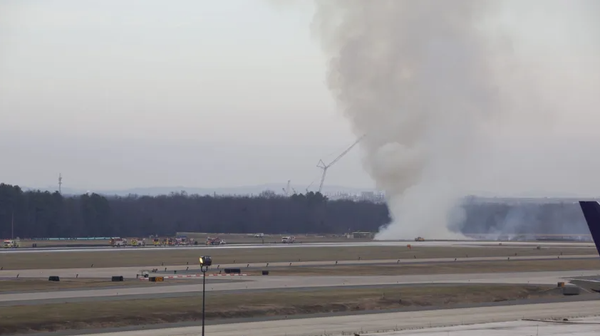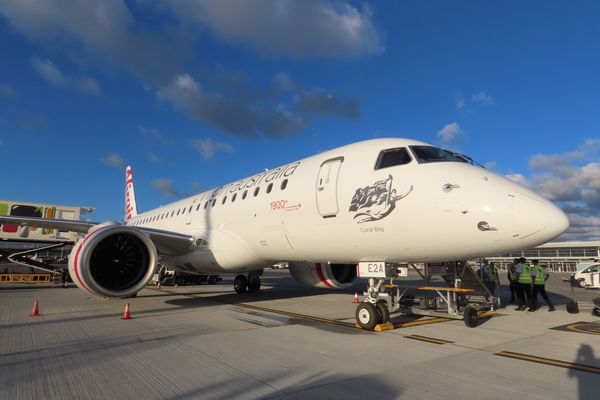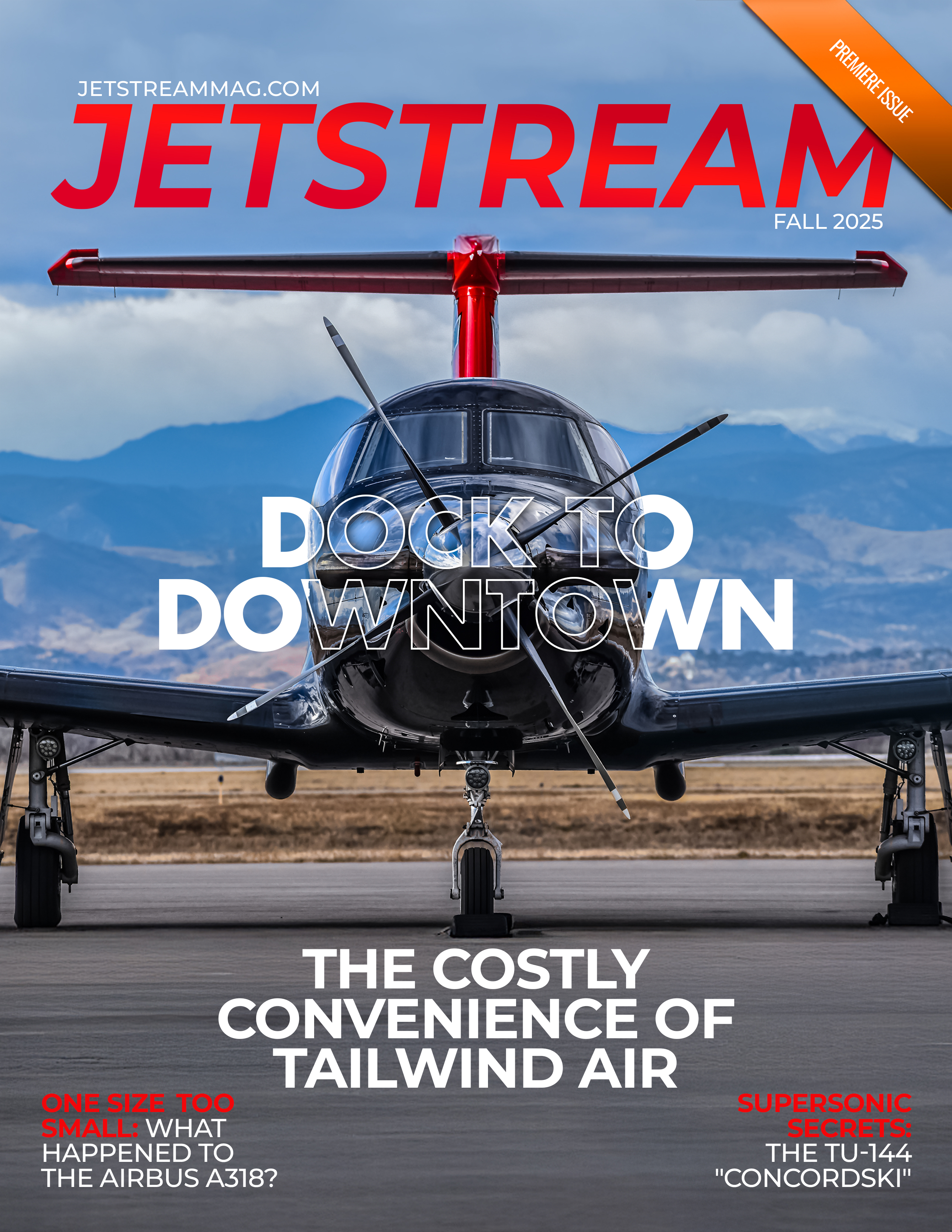Written by Agnel Jenson A. Paul for Jetstream Magazine.
Often associated with long-haul luxury and seen as a technological marvel of its time, the Airbus A340 now finds itself on the edge of extinction.
Airlines across the world are quickly retiring their four-engine workhorses in favor of more efficiently packaged twinjets. The A340's majestic silhouette is becoming a rarer sight, both in Europe — where most of its primary customers were based — and across the globe.

A Long-Haul Dream from Europe
The development of the A340 began before the full maturity of ETOPS (Extended Twin-Engine Operations Performance Standards) certification requirements. At the time, if airlines wanted to fly long routes over the ocean, they were limited to aircraft with more than two engines.
Airbus was still new to these requirements, especially compared to the well-established American manufacturers. Its earlier lineup included the A300, A310, and A320, which were very successful in the short- to medium-haul market. This success motivated Airbus to make its first serious attempt to challenge Boeing and McDonnell Douglas in the intercontinental market with the A340. Despite its size, the A340 was developed as a suitable alternative to the McDonnell Douglas MD-11 and Boeing 747. While the 747 offered high capacity, it was also very large and fuel-hungry. Airbus identified a niche for a slightly smaller, more efficient four-engine long-haul aircraft.

Initially, the A340-200 and A340-300 entered commercial service with Lufthansa and Air France. Although largely identical to the twin-engine A330 — sharing the same airframe and most components — the A340 variants featured four engines, making them better suited for long-haul transatlantic flights. Lufthansa later planned to replace its Frankfurt to New York JFK service with A340s, while Air France intended to use them to complement its existing four-engined aircraft operating between Paris and Washington DC.
Four Engines, One Experience: Comfort Redefined
The initial reception of the Airbus A340 among passengers was very positive. Its new jet smell, more comfortable 2-4-2 seating configuration that was ideal for families, and quieter cabin (compared to the 747 and MD-11) instantly made it a passenger favorite.
In 2003, Emirates took delivery of its first Airbus A340-500. The -500 variant, designed for ultra-long-haul routes, was scheduled by the airline to operate nonstop flights to Australia and North America. In fact, Emirates took the experience one step further by introducing exclusive first-class suites, a one-of-a-kind cabin at the time, with a 1-2-1 direct aisle configuration. These suites were unique in that they were enclosed, with fully flat beds and mini-bars for every passenger.
Other airlines shortly followed suit; Singapore Airlines found a niche use for the A340-500 by deploying the aircraft on its premium-heavy routes to destinations like Los Angeles, San Francisco, and New York. The Singapore-Newark route even held the title of the world's longest flight by great-circle distance, operated by an A340-500 configured entirely with 100 business class seats.

Meanwhile, Lufthansa decided to equip its Airbus A340-600s with the Lower-Deck Lavatory Module (LD-LM), which essentially relocated the restrooms to a floor below the main cabin. It was an excellent use of otherwise empty hold space while maximizing passenger comfort. After all, the A340 was marketed as the most luxurious long-range airliner, capable of flying anywhere with ease and comfort in mind. Right?
It was great, until it wasn’t.
 Ad by Jetstream Magazine by AeroXplorer.
Ad by Jetstream Magazine by AeroXplorer.
The Cost of Four Engines
The A340's biggest strength essentially became its biggest weakness. While it initially bypassed the ETOPS requirements with ease, its four engines came with extra weight, drag, and fuel penalties, which made very hefty marks in the airline's accounting books.
Soon after the A340's introduction, Boeing released its 777-200, which entered service with United Airlines in 1995. This move flipped the coin altogether for Airbus.
The airframe type received an ETOPS-180 certification from day one, which virtually opened all transoceanic and polar routes, making it a more fuel-efficient competitor to the A340-200/-300.

With the launch of the Boeing 777-300ER, Airbus struggled to compete with Boeing's existing portfolio, which prompted the development of the A340-500 & A340-600 variants for ultra-long-range and high-density travel. These aircraft were released in 2002 and 2003, respectively. However, due to the dramatic decreases in passenger volumes after the September 11 attacks, many airlines were forced into bankruptcy. Air Canada, the initial launch customer of the A340-500, was one of these impacted airlines. They were ultimately forced to cancel their order and seek a more efficient jetliner to sustain their operation.
A Slow and Silent Exit
In 2008, when Airbus was finally regaining its footing, the 2008 financial crisis dealt another blow, effectively sealing the fate of the A340. Airlines like Thai Airways, Cathay Pacific, Emirates, and Iberia quietly accelerated the aircraft's retirement, marking the aircraft for sale, storage, or eventual scrapping.
Comfort at a Cost: The Silent Death of the Airbus A340
Lufthansa Group was among the last major carriers to continue operating the A340, even briefly reactivating some A340s after the pandemic to handle unexpected travel demand. Still, the writing was on the wall. Lufthansa Technik has now completed the final C-check for the A340-600 fleet, a major maintenance inspection typically performed every 20-24 months. This comprehensive check, which involves an in-depth examination of the aircraft's systems and structure, marks a symbolic end for the type. With no further C-checks planned, the A340-600 is being phased out of active service.

The future clearly belongs to newer aircraft like the 787 and A350, both offering greater range, fewer engines, and lower costs. It is presumed that the only reason A340s are still flying today is due to ongoing delays in the Boeing 777X program.
Aside: A340s Still in Service (Active & Parked)
This information is current as of August 2025.
| Airline | Country | A340-200 | A340-300 | A340-500 | A340-600 | Total |
| AirX Charter | Malta | 1 | 1 | |||
| Azerbaijan Airlines | Azerbaijan | 1 | 1 | |||
| Conviasa | Venezuela | 2 | 1 | 3 | 6 | |
| Edelweiss Air | Switzerland | 5 | 5 | |||
| Hi Fly Malta | Malta | 3 | 3 | |||
| Iran Aseman Airlines | Iran | 1 | 1 | |||
| Kam Air | Afghanistan | 4 | 4 | |||
| Legend Airlines | Romania | 3 | 3 | |||
| Lufthansa | Germany | 16 | 6 | 22 | ||
| Mahan Air | Iran | 1 | 9 | 5 | 15 | |
| South African Airways | South Africa | 2 | 2 | |||
| Swiss Air | Switzerland | 4 | 4 | |||
| Syrian Air | Syria | 2 | 2 | |||
| Other | 6 | 9 | 14 | 15 | 44 | |
| Total | 9 | 60 | 14 | 30 | 113 | |
A Legacy That Stays Aloft
The Airbus A340 was a statement of technological capability and independence for Europe. Politically, it was also important for Airbus and the European Union to prove it could compete head-to-head with the U.S. duopoly.
Supersonic Secrets: The Tupolev Tu-144 "Concordski"
In the end, however, the A340 did not roar out of the industry. Instead, it faded gently, like a contrail in a twilight sky. It represents a different era of aviation, one that prioritized engineering elegance, cabin comfort, and long-haul stability, even if the broader market ultimately chose efficiency over character.

For those fortunate enough to fly on one, the experience is unforgettable — not because of sheer power or unmatched speed, but because of the serenity it offers while cruising. In today’s fast-paced world of aviation, that kind of quiet distinction is becoming increasingly rare.
This content is only available with an AeroXplorer+ subscription.
China Eastern Inaugurates New World's Longest Flight » Making a Stopover in Dubai? Discover How to Book a Yacht and Explore the City in a New Way » Engine Failure Forces United 777 Emergency Landing, Starts Brush Fire at Dulles Airport »
Comments (0)
Add Your Comment
SHARE
TAGS
INFORMATIONAL A340 Airbus Jetstream Jetstream Magazine Fleet Analysis Airbus A340 Retirement Lufthansa Swiss EdelweissRECENTLY PUBLISHED
 Engine Failure Forces United 777 Emergency Landing, Starts Brush Fire at Dulles Airport
A United Airlines Boeing 777-200ER bound for Tokyo made a safe emergency landing at Washington Dulles International Airport (IAD) on Saturday afternoon after an engine failure shortly after takeoff ignited a brush fire near the runway. All 275 passengers and 15 crew members aboard United Flight 803 were reported uninjured.
NEWS
READ MORE »
Engine Failure Forces United 777 Emergency Landing, Starts Brush Fire at Dulles Airport
A United Airlines Boeing 777-200ER bound for Tokyo made a safe emergency landing at Washington Dulles International Airport (IAD) on Saturday afternoon after an engine failure shortly after takeoff ignited a brush fire near the runway. All 275 passengers and 15 crew members aboard United Flight 803 were reported uninjured.
NEWS
READ MORE »
 Making a Stopover in Dubai? Discover How to Book a Yacht and Explore the City in a New Way
Planning a stopover in Dubai? Learn how to book a yacht in Dubai and explore the city’s skyline, landmarks, and coastline from a private yacht.
INFORMATIONAL
READ MORE »
Making a Stopover in Dubai? Discover How to Book a Yacht and Explore the City in a New Way
Planning a stopover in Dubai? Learn how to book a yacht in Dubai and explore the city’s skyline, landmarks, and coastline from a private yacht.
INFORMATIONAL
READ MORE »
 Maiden Brazil: Virgin Australia Welcomes the Iconic Embraer E2
Known for its aging intrastate fleets and unmatched concentration of Fokker 100s, Perth Airport has been a time capsule for aviation enthusiasts. Now, Virgin Australia Regional Airlines is breaking tradition with the arrival of the cutting-edge Embraer E190-E2, ushering in a new era for Western Australian air travel.
TRIP REPORTS
READ MORE »
Maiden Brazil: Virgin Australia Welcomes the Iconic Embraer E2
Known for its aging intrastate fleets and unmatched concentration of Fokker 100s, Perth Airport has been a time capsule for aviation enthusiasts. Now, Virgin Australia Regional Airlines is breaking tradition with the arrival of the cutting-edge Embraer E190-E2, ushering in a new era for Western Australian air travel.
TRIP REPORTS
READ MORE »





